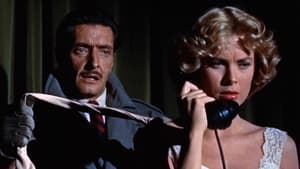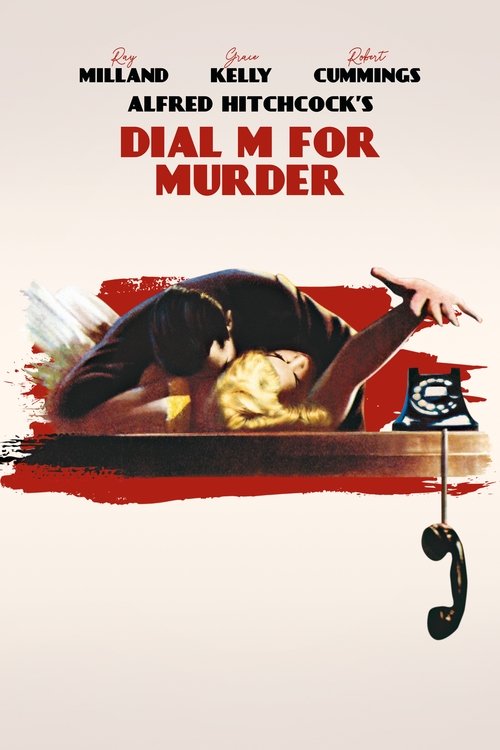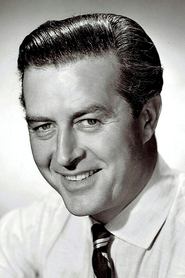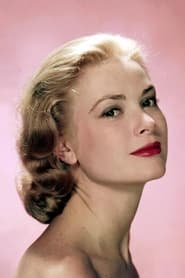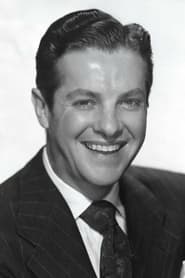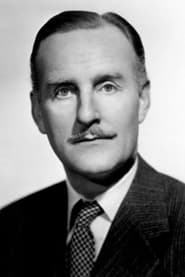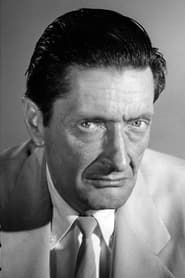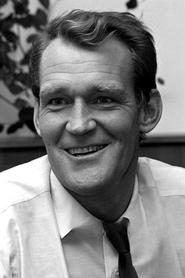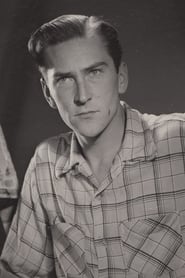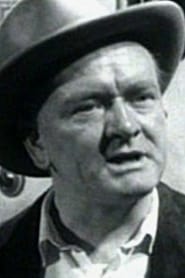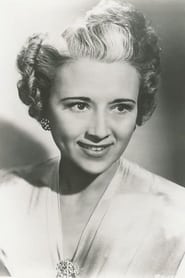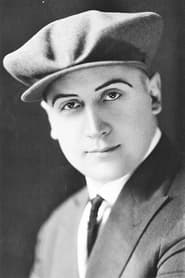Cast
View AllRay Milland
as Tony Wendice
Grace Kelly
as Margot Wendice
Robert Cummings
as Mark Halliday
John Williams
as Chief Inspector Hubbard
Anthony Dawson
as Charles Swann
Leo Britt
as Storyteller
Patrick Allen
as Detective Pearson
George Leigh
as Detective Williams
George Alderson
as First Detective
Robin Hughes
as Police Sergeant O'Brien
Jack Cunningham
as Bobby (uncredited)
Guy Doleman
as Detective (uncredited)
Bess Flowers
as Woman Exiting Ship (uncredited)
Sam Harris
as Man in Phone Booth (uncredited)
Harold Miller
as Men's Club Party Member (uncredited)
Crew
Director
- Alfred Hitchcock
Producer
- Alfred Hitchcock
Reviews
talisencrw
I used to consider this second-tier Hitchcock, but a re-watch proved to me just how excellent the script and directing were, as well as how stellar and underrated both Grace Kelly and Ray Milland tend to be, at least presently, three generations after the fact. The suspense is tied tighter than the proverbial drum.
Needless to say, to this day, I never keep scissors on top of my desk anymore...
Aug 10, 2016
John Chard
No, I'm afraid my murders would be something like my bridge: I'd make some stupid mistake and never realize it until I found everybody was looking at me.
Middle tier Hitchcock it may be, by his own admission, but it's still one of the finest mystery thrillers around. Ray Milland plays Tony Wendice, a former tennis player married to Grace Kelly's Margot, who is the source of his wealth. Fearing his lifestyle is about to come to an end due to her dalliances with American mystery writer, Mark Halliday (Robert Cummins), Tony hatches a plan to have her murdered by an old acquaintance whom he has over a barrel with blackmail. However, the plan backfires and a whole new strategy is needed to save Tony from suspicion.
Based on the popular and successful play by Frederick Knott (who adapts for the screenplay here), Dial M For Murder was a film Hitchcock had little time for. In fact, having already started work on Rear Window, Hitch treated Dial M For Murder as a jobbing assignment. His mood was further darkened by Jack Warner's insistence that the film be shot in 3D, with all the camera restraints that such a production brings. Perhaps unsurprisingly though, the restraints and general mood of the director brought about very pleasing results. Choosing to go for a claustrophobic single set shoot, Hitchcock resisted the urge to launch things around for 3D effects, instead he used the process to highlight props and angles of the Wendice home. His use of colours here first rate, particularly around his new found favourite actress, Grace Kelly.
Having never seen the 3D version (who has I wonder?) I can't say what impact, if any, the gimmick had. But regardless of Hitch's grumblings and general disdain towards the film, he rose to the challenge by challenging himself and actually produced a fine and technically sound picture. Ray Milland is icy cold yet debonair, while John Williams as Chief Inspector Hubbard strides in and walks off with the film. Kelly is adequate enough, it's her least effective turn for Hitch, so early in her career, she was a bit free with her physical love on the set (source "A Life in Darkness and Light"), but this highly appealed to (and amused) Hitch and he of course would use her for better rewards post this production. Sadly Cummings is awfully bland and threatens to lose the film momentum when things start to spice up in the last quarter.
Hugely entertaining picture though, one that is ripe with characterisations and of much interest to Hitchcock purists in how he works around the 3D format for his own filmic senses, Dial M For Murder holds up well today as a disquieting mystery thriller. 8/10
Jan 5, 2019
barrymost
Just with a glance at the cast list and the knowledge that it's directed by the legendary film-making genius Alfred Hitchcock, you know it's going to be good. This taut, nicely-done thriller was originally filmed in 3D, though I wouldn't say it's any less effective when viewed normally. Ray Milland and Grace Kelly are both very accomplished actors, and are very enjoyable here. Watch for John Williams as Inspector Hubbard from Scotland Yard; he's like a British Columbo! The story moves along at a good clip, with interesting dialogue and good twists. Watch out for that lethal pair of scissors!
Sep 5, 2019
Jack
While this is not one of the most popular Alfred Hitchcock films out there, it is still brilliant.
You can immediately recognise this film has Sir Alfred Hitchcock’s signature on it from the way the film is shot and its story is told.
I did not know anything about the film before I started watching it and I am glad I did it. There were plenty of surprises to see me going to the end of the film.
Would I watch it again? Possibly. Would I make my friends watch it? Definitely.
Jun 1, 2020
katch22
It is very obvious that this was written as a play. It is very heavy on exposition to cover almost all activities that take place outside of the "essentially" one room of the apartment. Nothing wrong with that, but it gives the film a different feel. This is more of an intellectual exercise than a action-packed murder mystery. It might have been better to have written Tony as a chess master than a former tennis star. It would have been a bit more in keeping with his plots and strategies. Even the action in the actual murder scene is "play-like" - a rather exaggerated initial reaction to being stabbed followed by the more drawn out dying, dying, dead finale.
Each time I watch this movie, I'm always struck by the strange idea that apparently every citizen is required to account for every pound note that they acquire and spend? I have no idea if this was remotely true in England in 1954, but it seems odd and unlikely. It's not critical, but it is jarring when they talk about it, because it seems so unnatural.
This is a great movie and a great story. However, the over-head camera angles for some scenes seems a strange choice, and Grace Kelly is clearly under-utilized in this role. Margot is such a compliant character that it seems very unlikely that she would engage in an extra-marital affair and then be so nonchalant about being with her former lover together with her husband.
While my criticisms might give the impression that I disliked the movie, these are only minor flaws in a superior film. Hitchcock is able to convey so much through an actor's mere glance - it is incredible!
Jul 26, 2021
CinemaSerf
This is definitely my favourite Hitchcock thriller. Adapted from Frederick Knott's equally enduring stage play; Ray Milland is wonderfully suave, debonaire and calculating as "Tony" who goes to some effort to enact the perfect murder to despatch his cheating wife (Grace Kelly). He hires petty crook Anthony Dawson to do the deed, but it all goes wrong and she ends up alive, well and leaving him with an unforeseen headache. Enter, in my view, the star of this film - John Williams ("Chief Inspector Hubbard") a resolutely persistent terrier of a police officer who is not at all convinced by the explanations he is getting and now we play the mother of all cat-and-mouse games. Dimitri Tiomkin's score adds tons to this expertly paced, thoroughly engrossing story that builds to a cleverly developed crescendo.
Nov 21, 2022
Thematic Analysis
Dial M for Murder represents a fascinating example of Thriller/Crime cinema, offering viewers a unique perspective on the human experience and societal structures. The film's approach to its themes demonstrates a creative vision that distinguishes it within its genre.
Director Alfred Hitchcock brings their distinctive visual style to this film, continuing their exploration of themes seen in their previous works while adding new elements. Their approach to pacing and visual storytelling creates a viewing experience that rewards close attention.
Released in 1954, the film exists within a cultural context that now offers viewers historical perspective on the social issues of that era. Its critical acclaim reflects its artistic achievements and its place in cinema history.
Did You Know?
- The production of Dial M for Murder took approximately 11 months from pre-production to final cut.
- With a budget of $1.4 million, the film proved to be a financial success, earning back its investment and more.
- The final cut of the film runs for 105 minutes, though the director's initial assembly was reportedly 133 minutes long.
- The director insisted on using practical effects whenever possible, reserving CGI for only the most necessary scenes.
- Some visual effects sequences took up to 12 months to complete.
- The screenplay went through 5 major revisions before the final shooting script was approved.
Historical Context
- In 1954, when this film was released:
- The Cold War was intensifying, influencing global politics and culture.
- Rock and roll music was revolutionizing popular culture.
- The film industry was dominated by major studios, with independent cinema still in its early development.
How This Film Stands Out
While Dial M for Murder shares thematic elements with other films in its genre, it distinguishes itself through its unique approach to storytelling, visual style, and character development.
Unlike Dancer in the Dark, which focuses more on action than character development, Dial M for Murder offers a fresh perspective through its innovative visual language and narrative structure.
While films like The Dark and Sand Trap explore similar territory, Dial M for Murder stands apart through its deeper exploration of its central themes and more complex characterization.
This film's unique contribution to cinema lies in its thoughtful balance of entertainment value and thematic depth, making it a valuable addition to its genre.
Details
- Release Date: May 29, 1954
- Runtime: 1h 45m
- Budget: $1,400,000
- Revenue: $3,000,000
Where to Watch

